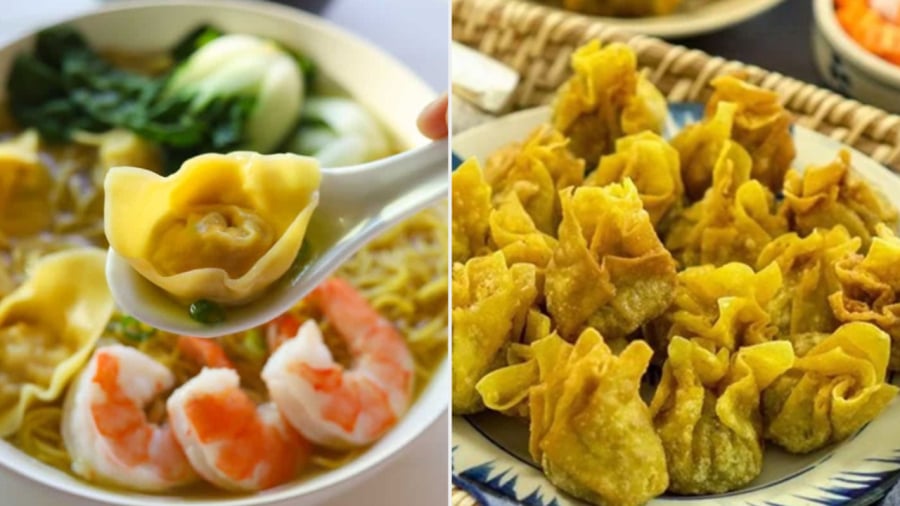Ha gow, siu mai, and wonton are all types of dim sum. Many people find it difficult to distinguish between these dishes as they have multiple versions with different fillings. The information below will help you differentiate between these dishes.
Ha gow

Ha gow wrappers are made of a mixture of tapioca starch and rice flour, so when cooked, they will be white, slightly translucent, and have a chewy texture.
Ha gow is a popular and arguably the most famous type of dim sum. It comes in many shapes and with different fillings. However, the common characteristic of ha gow is the white, slightly translucent, and thin outer wrapper. The ha gow wrapper is made of a mixture of tapioca starch and rice flour (or sometimes wheat starch or potato starch), so the wrapper has a certain chewiness and turns translucent white when steamed.
Siu mai
Siu mai (known as mandu in Korea and gyoza in Japan) also has different variations. It can be steamed or fried to create a crispy outer wrapper.

Siu mai is usually larger and longer than ha gow.
The “standard” version of siu mai is flat and long, resembling a crescent moon (longer than ha gow). The siu mai wrapper is made from a mixture of wheat flour and water, rolled out thinly. When cooked, the wrapper becomes soft, smooth, and not as translucent as ha gow.
Wonton
If siu mai is shaped like a crescent moon and has a larger size, wonton will be much smaller.
The filling for wonton is also simpler than that of siu mai, typically consisting of minced meat and mushrooms. In contrast, siu mai has fresh shrimp and other ingredients.

Wonton.
Wonton can be boiled, cooked with noodles, or fried. Wonton can be eaten on its own with a seasoned sauce or used in dishes like wonton noodles or wonton soup. Fried wonton dipped in sauce is also delicious.
The wonton wrapper is made from a combination of wheat flour, rice flour, and eggs. The ingredients are mixed together, rolled out thinly, and cut into square pieces. The wonton wrapper, when cooked in water, will have a golden yellow color, or when fried, it will become crispy.
Xiu mai

Xiu mai has a distinctive shape, similar to a yellow packet, with an open mouth and is not tightly wrapped like ha gow, siu mai, or wonton.
In addition to the aforementioned three types of dim sum, xiu mai is also a popular type that is widely available. Xiu mai is easier to distinguish due to its shape, which resembles a yellow packet. The xiu mai wrapper is yellow and relatively thin. Xiu mai is not tightly wrapped like ha gow, siu mai, or wonton. Instead, part of the filling is exposed at the top.
































